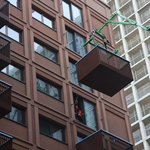Bordercollie
Senior Member
Flying is only if you are traveling from Toronto to Ottawa Montreal. It's no use to travel from. Oshawa to Smith Falls for example.That really depends on how much political will there is to subsidize HSR. The airlines will fight against a subsidized rail service that is both faster and cheaper than their offerings.
That really depends on your origin-destination pair. According to this NY Times article in 2019 (just before COVID), while the Acela is cheaper than flying for New York City to Washington, for both Boston to New York City and Boston to Washington, flying is cheaper than the Acela (and for the latter, flying is even cheaper than Northeast Regional).
Certainly it is optimal if you can thread the needle between cost and speed, so that you can they can attract both drivers and flyers.
Given that Porter offers flights from Ottawa-Toronto starting at $133 (one way), I am not sure if HSR would easily be able to deeply discount that. I agree that they need to steal from driving, but you don't need HSR to do that. Frequent, reliable, and affordable, rail service that is time competitive to driving (like HFR) will do that quite well. Further increases in speed will increase costs (both NRE and reoccurring), which needs to be covered by either increased ridership or increased fares. Given the small percentage of those flying within the corridor, the potential to increase ridership is small, so most of it will have to come from increased fares, which will deter some of those those who would otherwise drive.
View attachment 416790
The train serves more than just Toronto to Montreal/Ottawa.




